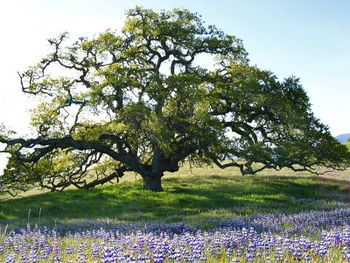Difference between revisions of "Santa Lucia Conservancy"
(→History) |
|||
| Line 21: | Line 21: | ||
==History== | ==History== | ||
| − | *'''early 1800s''': | + | *'''early 1800s''': Mexican land grants establish El Potrero de San Carlos and San Francisquito, the precursors of Rancho San Carlos, now an appreciable portion of [[Santa Lucia Preserve]]<ref name="SLCstory">Santa Lucia Conservancy Website - Our Story [http://www.santaluciapreserve.com/our-story]</ref> |
*'''1857''': El Potrero de San Carlos and San Francisquito are combined to form Rancho San Carlos, a functioning cattle ranch<ref name="SLCstory"/> | *'''1857''': El Potrero de San Carlos and San Francisquito are combined to form Rancho San Carlos, a functioning cattle ranch<ref name="SLCstory"/> | ||
*'''1906''': Carmel founded<ref name="">Santa Lucia Conservancy Website - Real Estate[http://www.santaluciapreserve.com/real-estate/beautiful-california-land-for-sale]</ref> | *'''1906''': Carmel founded<ref name="">Santa Lucia Conservancy Website - Real Estate[http://www.santaluciapreserve.com/real-estate/beautiful-california-land-for-sale]</ref> | ||
Revision as of 21:00, 7 April 2016
Santa Lucia Conservancy (SLC) is an independent, non-profit land trust charged with stewardship of Santa Lucia Preserve, 18,000 acres of conserved land located in the Carmel Watershed along California's Central Coast Region.[1] As a private, independent organization, Santa Lucia Conservancy is not accountable to the California Council of Land Trusts and is a non-government entity. However, as a 502(c)(3) non-profit, Santa Lucia Conservancy is tax-exempt under the US Internal Revenue Code.[2] SLC operations are overseen by a board of governors whose members comprise landowners, scientists, and conservationists.[3] Only ten percent of the preserve is designated for development of residences, ranches, and community structures, while the remaining ninety percent is designated as permanently undeveloped.[4] Santa Lucia Preserve currently has 300 homesites, with for-sale homes in the $4-14 million range.[3]
Contents
Objectives
The approach Santa Lucia Conservancy has taken to protect lands in Santa Lucia Preserve centers around land management, ecological research, easement stewardship, and environmental education.[5]
Land management: Santa Lucia Conservancy manages 10,350 acres of wildlands in Santa Lucia Preserve, while the remaining acreage is privately owned. All 18,000 acres are managed by collaborations between SLC and private landowners. SLC land management activities include:[5]
- mowing & pruning of foliage
- prescribed fires
- application of herbicide
- controlled ungulate grazing
- environmental monitoring
Ecological research: Santa Lucia Conservancy supports on-site ecological research through private studies, collaboration with researchers, and mentorship of interns.[5]
Easement stewardship: Santa Lucia Conservancy is obliged to enforce compliance with rules set in place for conservation easements (use of conserved land for specified purposes).[5]
Environmental education: Santa Lucia Conservancy promotes education through engagement programs with local students and community members about environmental awareness and the importance of land conservation.[5]
History
- early 1800s: Mexican land grants establish El Potrero de San Carlos and San Francisquito, the precursors of Rancho San Carlos, now an appreciable portion of Santa Lucia Preserve[6]
- 1857: El Potrero de San Carlos and San Francisquito are combined to form Rancho San Carlos, a functioning cattle ranch[6]
- 1906: Carmel founded[7]
- 1924: Rancho San Carlos is converted to a "gentleman's ranch", including construction of a villa and polo field[6]
- 1939: Rancho San Carlos changes ownership again, returning to its previous land use of cattle ranching[6]
- 1990: The founders of [Santa Lucia Preserve] acquire Rancho San Carlos and begin development and conservation planning[6]
- 1995: Santa Lucia Conservancy is established[1]
Projects, science, & research
Internal
Wildlife monitoring:
Conservation grazing:
Plant restoration:
incl. invasive weed mowing
Sustainable farming:
External
Hydrologic conditions in baseflow: CCoWS
Graduate-level research projects:
Resources at stake
Groundwater
Threatened species habitat
- Steelhead
- CA red-legged frog
- CA tiger salamander
Affiliations & stakeholders
- Monterey Peninsula Water Management District (MPWMD)
- California-America Water Company (Cal-Am)
- Monterey County Water Resources Agency
- Carmel River Steelhead Association (CRSA)
- Carmel River Watershed Conservancy (CRWC)
- City of Carmel
- CSUMB Watershed Institute
- Carmel Area Wastewater District (CAWD)
- Los Padres National Forest
- California State Parks
- Resource Conservation District of Monterey County
- Planning & Conservation League Foundation
- Ventana Wildlife Society
Links
References
- ↑ 1.0 1.1 Santa Lucia Conservancy Website - About [1]
- ↑ 501(c)(3) Non-Profit Organizations [2]
- ↑ 3.0 3.1 Santa Lucia Conservancy Fact Sheet [3]
- ↑ Santa Lucia Conservancy Website - Real Estate [4]
- ↑ 5.0 5.1 5.2 5.3 5.4 Santa Lucia Conservancy Brochure [5]
- ↑ 6.0 6.1 6.2 6.3 6.4 Santa Lucia Conservancy Website - Our Story [6]
- ↑ Santa Lucia Conservancy Website - Real Estate[7]
Disclaimer
This page may contain student work completed as part of assigned coursework. It may not be accurate. It does not necessary reflect the opinion or policy of [CSUMB], its staff, or students.

